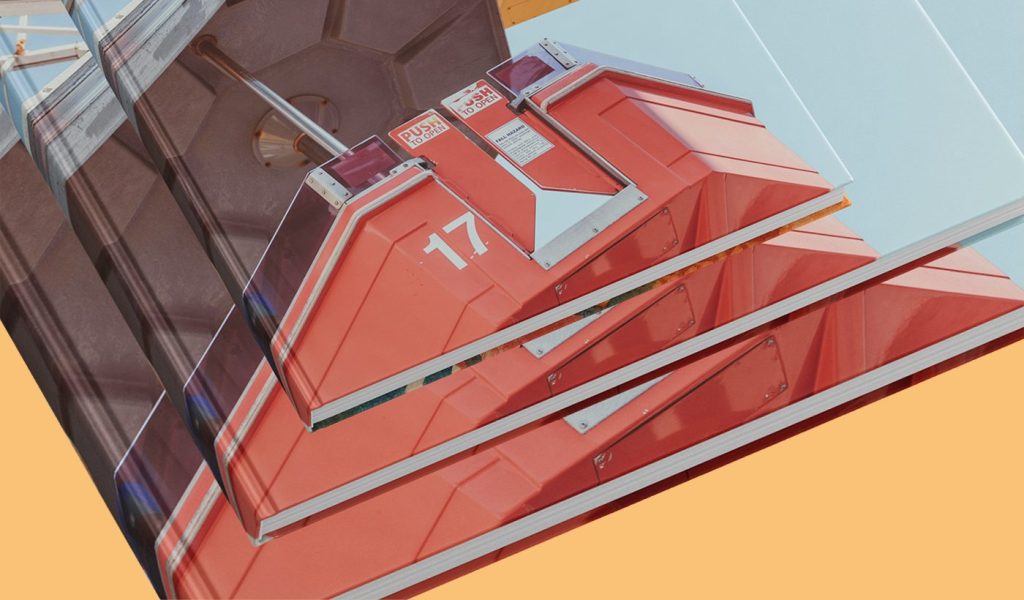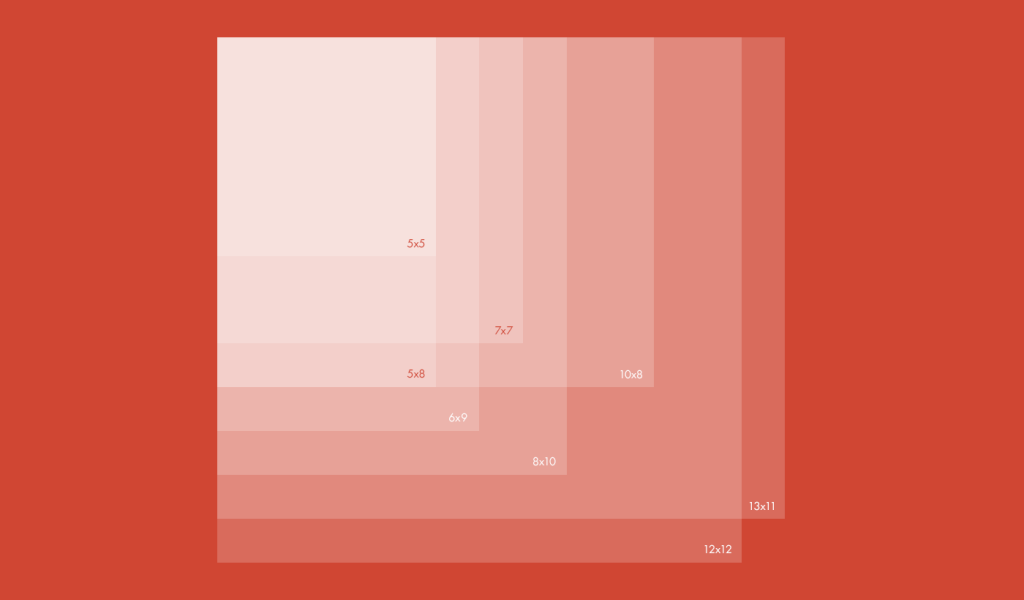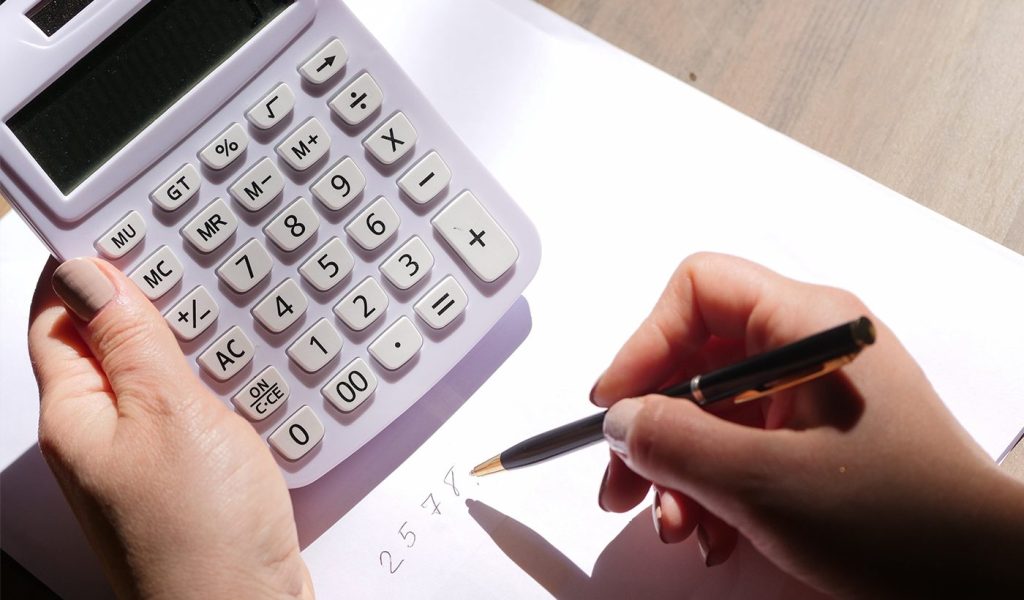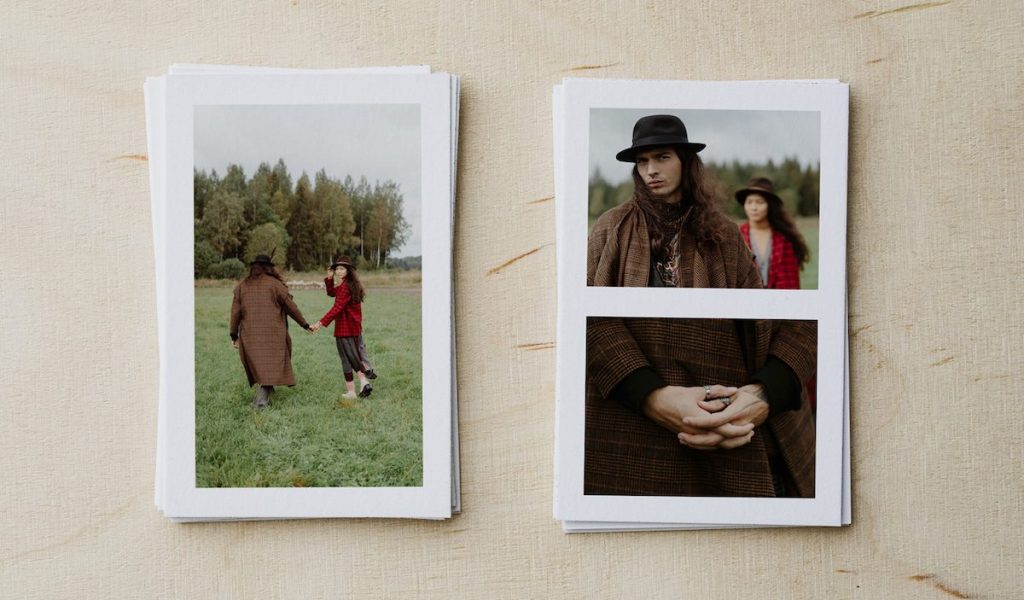The art and science of book trim sizes: A comprehensive guide for visual creators
Published July 11, 2017. Last updated February 2, 2023.
As you channel your artistic energy into crafting the perfect book, you’ll encounter many decisions. The genre, cover design, distribution channels, and one crucial yet often underappreciated aspect: the book’s trim size. This term refers to your book’s dimensions once printed, bound, and cut down to its final size. But it’s not just about the physical form; the trim size significantly determines your book’s charm, reading appeal, and even the cost of production.
For all the visual creators out there looking to strike a balance between artistic representation and audience expectations, this guide is for you. We aim to simplify the concept of book trim size, giving you the tools to make an educated decision that doesn’t sacrifice your innovative spirit.
Trim size defined
Trim size refers to the physical dimensions of a book—the width and height of a finished copy. It is the final size of a book after its pages are cut from the printed sheets.
This term originates from traditional publishing, where larger paper sheets are printed, bound, and then “trimmed” to their designed size. Trim size is always in inches or centimeters, with width mentioned first before height.
Why does it matter?
The trim size of a book is often the first thing your audience notices, even before they read the title or creator’s name. It sets the tone for their expectations and the book’s perceived value.
For visual creators, trim size is especially crucial as it serves as a canvas for your work. Depending on your chosen size, it can enhance or detract from your artwork’s impact.
Trim size comes down to four things: experience, aesthetics, costs, and marketability. Let’s explore each.
- Audience experience: The trim size dictates the size of your font, how much content you can fit on a page, and the amount of white space you can offer. All these elements can significantly affect how your audience engages with your book.
- Aesthetics: The trim size sets the tone for your book’s visual appeal. It can convey a sense of intimacy, grandeur, or even quirkiness. For example, a larger trim size can enhance the display of visual content in art books, cookbooks, or photographic collections—and a smaller one is easier to tote around to read on the go.
- Costs: The trim size of a book impacts its production costs. Smaller sizes require fewer materials, thus reducing the cost. However, large trim sizes can be eye-catching and make a statement, so balancing cost and appeal is essential.
- Marketability: Some trim sizes are more popular and widely accepted in the industry, increasing their chances of being picked up by retailers or libraries. Of course, unique trim sizes can differentiate your book from a crowded market. It all depends on your target audience and the genre of your book.

What are standard sizes in publishing?
Most books fall into a few standard trim sizes, offering practicality and marketability. They typically are broken into genres, so that’s where we’ll start.
Psst. Are you printing with Blurb? Jump to our trim sizes here.
Visual books: popular sizes
- Photography books: Often within the 10×8 to 13×11 inch range, photography books need a large canvas to showcase detailed images effectively. Remember, the trim size should enhance, not diminish, the visual impact of your photographs.
- Coffee table books: Designed to be displayed, they generally are square or landscape and have larger dimensions, ranging from 12×12 all the way to 19×13 inches. This big size gives ample space for striking visuals and makes a strong statement.
- Art books: Usually fall in the 13×11 to 11×14 inch range. Large dimensions are crucial to display artwork in its full glory and detail. However, it should still be easy for your audience to handle and flip through.
- Children’s books: This genre has a wide range of sizes, from 7.5×7.5 to 10×8 inches. The size depends on the target age group—board books for infants are usually tiny squares, while picture books for kindergarten-age kids are larger.
- Comic books: Traditionally, comic books are around 6.625×10.25 inches. This size is ideal for displaying panels and graphic storytelling while still being comfortable for holding and reading.
- Graphic novels: These books typically use the 7×10 inch size. It’s a good compromise between showcasing visual detail and maintaining reader comfort during extended reading periods.
- Cookbooks: These typically range from 8×10 to 8.5×11 inches. A medium or large trim size can beautifully display food photos and detailed recipes, making the book more visually appealing and practical as the pages stay open in the kitchen.
- Notebooks: Sketchbooks, journals, and notebooks come in various sizes, depending on their intended use. Small pocket books can range from 3.5×5.5 inches to 5×8.25 inches, while regular-sized notebooks are usually around 8.5×11 inches.
- Magazines: Periodicals usually follow standard sizes, with the most popular being 8.5×11 inches for US publications and A4 (8.27×11.69 inches) for international ones.
Text-heavy books: popular sizes
- Fiction and memoir: Mainstream fiction often uses a 5.5×8.5 or 6×9 inch trim size. This size is comfortable for reading and practical for printing and distribution.
- Nonfiction: These genres are often found in 5.5×8.5 or 6×9 inch sizes, but this can vary based on the book’s content and purpose.
- Poetry and short stories: These books and anthologies often use smaller trim sizes like 5.5×8.5 inches, creating an intimate reading experience that aligns well with the nature of this work.
- Novellas: Due to their shorter length, novellas commonly use a trim size of 5×8 inches. This size is compact yet provides sufficient space for the story.
- Young adult: The most popular trim size for young adult fiction is 5.5×8.5 or 6×9 inches. This lets younger readers hold and read the book comfortably.
- Business books: These books often go for a 5.5×8.5 or 6×9 inch size, considered professional and easy to carry.
- Textbooks, academic texts, and reference books: Due to their comprehensive content, textbooks often require a larger trim size of around 8×10 or 8.5×11 inches to accommodate detailed diagrams, charts, and wide margins for notes.
Remember, while these are standard sizes, they’re not hard-and-fast rules. The beauty of book design lies in its flexibility. Your trim size should ultimately serve your book’s content and your target audience’s preferences. It’s your book, so let your creativity shine through your choice!

Your step-by-step guide to choosing a trim size
Now that we have the basics down let’s get into the specifics. Here’s exactly what you need to do to pick your self-published book’s trim size.
1. Consider your content
First and foremost, take a step back and evaluate the content you have. For visual creators, you’ll need to consider the aspect ratio and resolution of your images. And if you’re an author, the length and structure of your text should guide your choice.
Here are a few questions that can guide you as you consider:
- Spend time on your artistic vision. How does it affect size?
- What is the nature of your content—text-heavy, image-heavy, or a combination? And are you planning on a series or sequel?
- Is your book intended to be displayed or carried around? Where do you imagine it in a bookstore?
- Will any images lose impact or clarity if they are scaled down?
- How would a larger or smaller trim size impact the readability of your text?
- Think about extras like charts, graphs, diagrams, footnotes, references, or glossaries—how will they show up?
2. Research your genre
Stroll through your local bookstore or browse online platforms to see what successful books in your genre look like. Pay particular attention to the trim sizes of the top-sellers or popular books within your genre.
For instance, if you’re writing a graphic novel, study the trim sizes of bestsellers in that genre. Does a larger trim size enhance the visual experience? Or does a smaller, more portable size strike the right balance between its convenience and visual impact?
Remember, while it’s important to understand industry norms and audience expectations, don’t let this limit your creativity. If a unique trim size complements your content and meets your audience’s needs, it could differentiate your book in a crowded market. Just ensure it is a conscious, well-researched decision.
3. Know your audience
Understanding your audience is crucial in the book design process, especially when deciding on the trim size. Consider your audience’s reading habits, preferences, and the context in which they’ll likely consume your content. Here are some tips and tricks to know your audience better.
- Surveys and direct feedback: Connect directly with your audience through surveys or social media platforms. Ask about their preferences—do they enjoy larger books for a more immersive reading experience, or do they favor smaller, more carriable sizes?
- Analyze existing data: Use data from your website, social media platforms, or other customer touchpoints to glean insights about your audience. Are your fans primarily young adults who might appreciate a trendy, unconventional trim size, or are they more traditional readers who prefer standard sizes?
- Consider the context: Where and when will your book be consumed? If it’s a cookbook, a larger size could be preferable so the pages stay open in the kitchen. If it’s a travel book, a more portable size might benefit on-the-go reading.
- Value perception: The trim size can influence how your audience perceives the value of your book. If you’re looking to sell your art book for a premium price at a gallery, you might want to offer an oversized book that screams luxury—while a serial comic might require a lower price point and economy trim size to go along.
- Test and iterate: Consider creating prototypes of your book in various trim sizes and ask for feedback from a test audience. This can provide valuable insights and help you make a more informed decision.

4. Evaluate your budget and pricing strategy
You want a book that looks good and aligns with your budget and audience expectations. Trim size of a book can significantly influence production costs. Here’s what to consider.
- Production costs: Generally, larger books are more expensive to produce. They require more paper, increase printing costs, and might also incur higher shipping fees due to their weight. Conversely, smaller books can be more cost-effective to produce—but remember to balance cost considerations with the impact on readability and aesthetic appeal.
- Pricing strategy: The production cost of your book will directly impact its retail price. A higher production cost might necessitate a higher retail price to maintain profit margins. However, this could impact your book’s competitiveness in the market. What price point is your target audience willing to pay?
- Profit margins: When evaluating your budget and pricing strategy, always consider your profit margin. Remember to account for the wholesale discounts you might offer to retailers or distributors (most call for 50 percent!). You must also factor in the cost of unsold copies, shipping, marketing, and other overheads.
- Print-on-demand or offset: Print-on-demand (POD) allows you to print books as needed, but it is often more expensive per unit compared to offset printing and you typically must choose standard sizes. Offset printing allows you to print a large run, reducing per-book price and allowing you to print unique sizes, but you’re tasked with storage, shipping, and returns. Knowing your budget and potential sales volumes can help determine whether POD or offset is the better option for your book.
- Ask for quotes: Request print quotes for different trim sizes from several printers and self-publishing platforms. This step will give you a clear understanding of how trim size impacts cost. It’s also an opportunity to discuss your project with professionals who can offer advice based on their experience.
5. Check the supported trim sizes of your distribution platform
Before deciding on a trim size, consult your distribution platform’s guidelines. This critical step will prevent surprises during the publishing process, ensuring your book is built right from the start. Here are three popular platforms to research.
Blurb
Blurb is known for archival-quality photo books, making it a fitting choice for photographers and visual artists. We offer diverse trim sizes, including unique square formats, affordable standard trade book sizes, and even popular notebooks and magazine trims. Find every size offered by visiting Blurb’s format page or jumping to our favorite trim size per genre below!
Amazon
Amazon is a popular distribution choice for self-publishers. You can sell your books in a variety of trim size options, both standard and non-standard. The trim size you select impacts the printing cost, so balancing creativity with economic practicality is important.
Did you know? If you build and print a photo book with Blurb, you can distribute on Amazon.
Ingram Spark
Ingram Spark is known for its vast distribution network, making your book accessible to a global audience and physical bookstores. They can distribute books in three trim sizes in paperback and hardcover, with specific guidelines for different genres and book types.
If you’re a Blurb creator, you can also distribute your Blurb trade book or notebook to 39,000 online and physical bookstores globally via Ingram, too!

6. Experiment, print a proof, and finalize
Now that you’re armed with all the information you need, it’s time for the fun part: making a choice! Remember, selecting the trim size of your book is not just about the numbers—each book has its unique personality, just like its creator!
Be bold and experiment with your trim sizes. This is a creative endeavor, so try popular, tiny, and even out-of-the-box sizes! But remember, while straying off the beaten path can be exciting, it should always be a calculated risk. Weigh your creative urges against the practical aspects of cost, audience preferences, and platform guidelines.
Once you’ve made your choice, go ahead and print a proof copy. Hold it, flip through it, and immerse yourself in the physical manifestation of your work. Get feedback from trusted advisers and your target audience. How does the trim size fit with your content? Does it enhance your audience’s experience? If the answer is an enthusiastic yes, congratulations! You’re on your way to creating a beautiful and engaging book.
Don’t worry if you need to refine your choice—remember, great things often take time and a few iterations. What’s important is that you’ve embarked on this creative journey and are committed to creating a book that truly reflects you, your content, and your audience’s expectations. You’ve got this!
The final cut
Selecting the right trim size for your book is a crucial detail that can elevate your work to new heights. Though it may seem daunting at first, with a little research and creative experimentation, you can find the size that perfectly complements your content and resonates with your audience. Remember, your book is an extension of your creative vision—don’t be afraid to go big (or tiny).
You’ve got the tools, the knowledge, and the creativity to craft a book that’s as unique as you are. So go out there, make bold choices, and let the world see your vision in print. After all, we need more creators like you!
Printing with Blurb?
If you’re printing with us, you’re probably wondering which size is best for your book. Here’s the scoop.
Photo books
- Mini Square 5×5 in. (13×13 cm): Best for photo albums, memory books, travel books, and gifts.
- Small Square 7×7 in. (18×18 cm): Best for children’s books, short volumes in a photography collection, illustrations, and gifts.
- Standard Portrait 8×10 in. (20×25 cm): Best for cookbooks, comic books and graphic novels, how-to guides, history books, textbooks, and photography and illustration books.
- Standard Landscape 10×8 in. (25×20 cm): Best for photography books, art books, coffee table books, and children’s books.
- Large Landscape 13×11 in. (33×28 cm): Best for art books, photography books, fine art portfolios, coffee table books, and wedding and family albums—especially when you make them layflat.
- Large Square 12×12 in. (30×30 cm): Best for coffee table books, art books, photography books, and children’s books.
Trade books and notebooks
- 5×8 in. (13×20 cm): Best for novels and novellas, short-story and poetry collections, and pocket-sized notebooks.
- 6×9 in. (15×23 cm): Best for all kinds of fiction (novels, YA, essays) and nonfiction (memoirs, business books, illustrated field guides)! Plus, portable notebooks, sketchbooks, and journals.
- 8×10 in. (20×25 cm): Best for affordable cookbooks, travel books, guides, history books, textbooks, how-to guides, children’s novels, graphic novels, and serial photography and illustration books.
Magazines
- Premium Magazine 8.5×11 in. (22×28 cm): One size for any type of magazine or serialized content!
***
Blurb is an empowering platform that puts the power of self-publishing right at your fingertips. Choose from tons of trim sizes, design your book with our free software BookWright, print it on demand, and even sell it via our no-fee bookstore. Get started today.


This post doesn't have any comment. Be the first one!